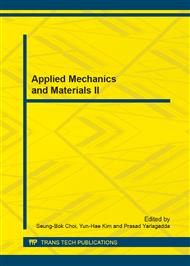p.1331
p.1336
p.1340
p.1345
p.1349
p.1354
p.1359
p.1365
p.1369
Effect of Different Winemaking Technologies on Quality in Cabernet Sauvignon Red Wines
Abstract:
Red wines were made from Vitis vinifera cv. Cabernet Sauvignon in China at different methods of maceration. The effects of using different winemaking technologies during maceration on the quality characteristics, in terms of colour, aroma profile and sensory characteristics, of the wines before bottling were evaluated, and made a comparison with the effects of adding skins. Seed contact treatments raised wine colour intensity, proanthocyanidins, tannins, and polyphenols content in comparison to the control wines. However, as indicated in the sensory evolution, the significant increase in astringency intensity was found in the wines with seed contact. Besides, the bitterness of the red wine also increased in the wines with seed contact, but it was not significantly.
Info:
Periodical:
Pages:
1349-1353
Citation:
Online since:
December 2013
Authors:
Keywords:
Price:
Сopyright:
© 2014 Trans Tech Publications Ltd. All Rights Reserved
Share:
Citation:


